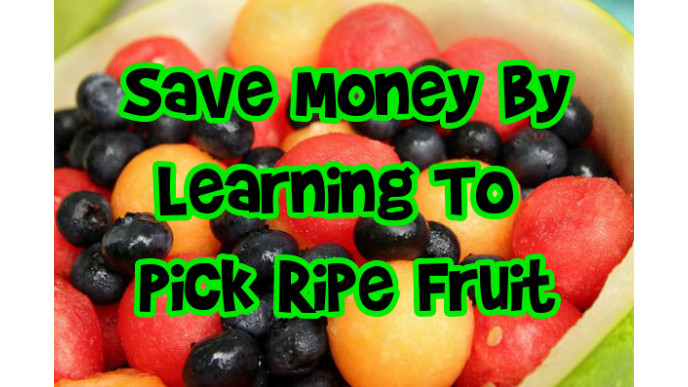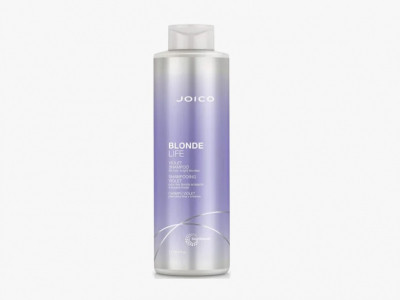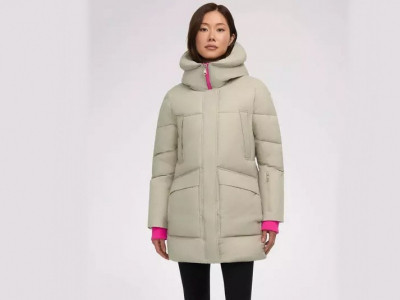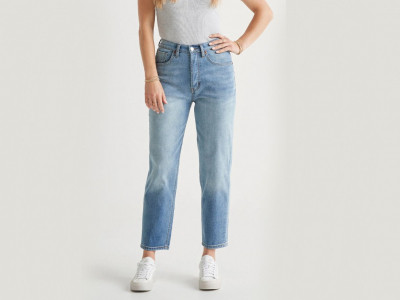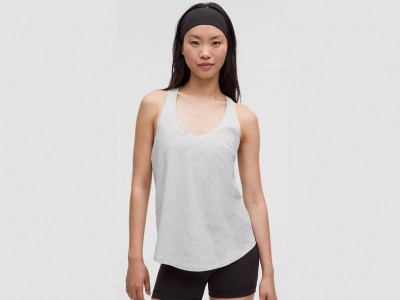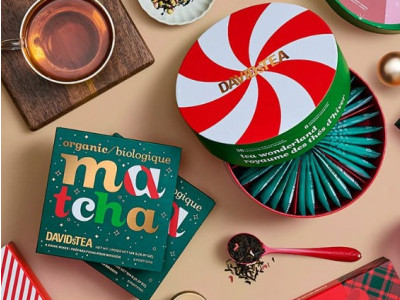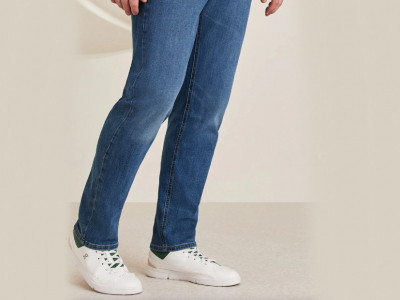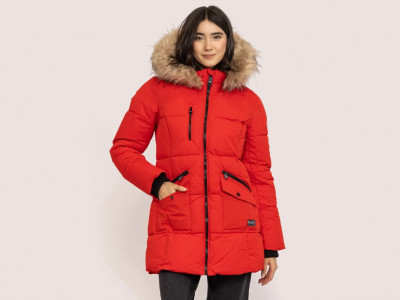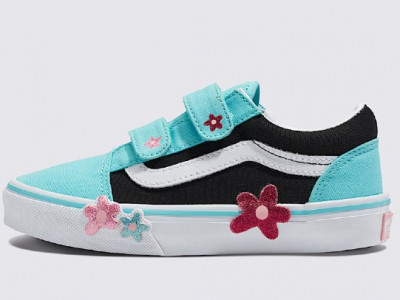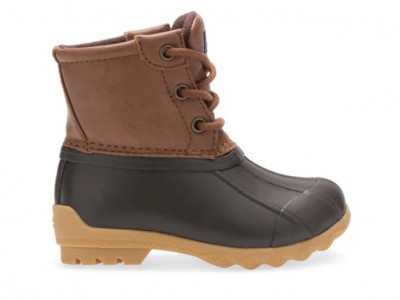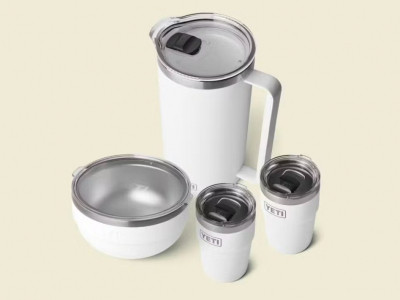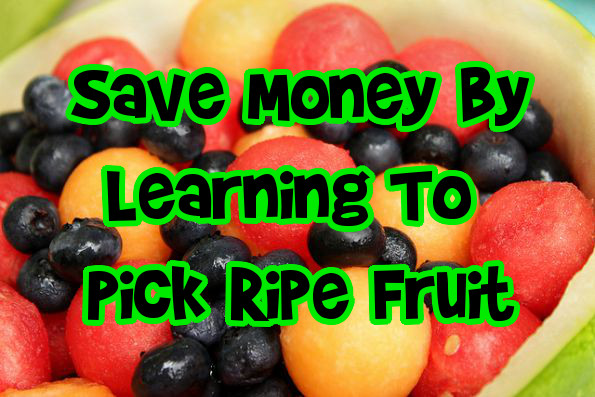
The other day I was at a friend’s BBQ and was telling her about how amazing grilled pineapple is fresh off the BBQ. I was lamenting not bringing along a pineapple to share. At first she politely danced around my insistence that it was delicious and she mentioned her husband did not like pineapple. Eventually, she quietly admitted to me that she loved pineapple but could never pick a good one!
Many fruits are in their prime right now, there is simply no reason to waste money on under ripe or spoiled fruit. Even worse is when you get fruit home, but a day later it is rotten on your counter. National Geographic estimates the average family spends $1,484 in food that is simply scraped in the bin every year. Whether it is the high peak of summer, or the middle of winter when fruit costs are steeper, this handy guide can help you to pick the best every time. Pick the right fruits and more of it ends up in your belly, with less of it ending up in the bin.
Watermelon:

It may look a little strange, but if you gently knock on the rind of a full melon, the melon that makes the lowest hollow sound will generally be the tastiest. The low-pitched sound indicates the melon is full of more water and riper. Make sure the rind in intact with no bruises. For larger watermelons, look for a melon that has a nice yellow spot where the melon has been sitting in the field. Watermelons will not ripen more once picked, but sometimes taste sweeter if you cut them in half and put them in the refrigerator for a day or two. Primally Inspired has a few extra tips, including a picture of what a yellow field spot looks like.
Cantaloupe: I still have trouble picking the right cantaloupe and I usually leave the picking of this fruit to my husband who has better luck. I found some great tips over at Raise Healthy Eaters. A ripe cantaloupe should smell sweet and have a beige or orange colour to the rind. If the melon is green or has a white colour, skip it and try another. You can also press the spot where the melon attaches to the stem. Your thumb should give a little when you press but should have a little give.
Pineapple: I could not make this list without including my favourite sweet pineapple. Your nose will be able to tell you which pineapple is sweet so make sure you smell the fruity pineapple aroma. Choose a fruit with green leaves and avoid a pineapple with dry or brown leaves. The skin of the pineapple is not an indicator. A ripe pineapple can be green or yellow on the outside. I have had some success ripening pineapple by cutting off the top and the bottom while leaving the rind on. Place in a plastic bag and many will sweeten up in a few days.
Peachesand Nectarines:

We eat quite a few peaches in our house when they are in season. A ripe peach or nectarine should smell very sweet. Peaches generally will get softer over time but do not tend to get sweeter so let your nose be your guide. Avoid fruit that has obvious bruising or blemishes on the skin.
Mango: I am no mango expert but found plenty of info at Mango.org. Gently squeeze the mango, it should give a little and not feel hard. A ripe mango should have a faint sweet smell near where the stem would attach to the fruit. Mangoes will continue to ripen after picked, and you can speed up the process by placing them in a paper bag if you find your mangoes are under ripe.
Pears: Pears should be firm to the touch but should not be as hard as a rock. Some pears have a slight sweet smell while others may not. Look carefully at the skin to check for bruises or other marks that can spoil your fruit.
Strawberries: Look for berries that are bright red in colour. Berries that are white or green are under ripe. Ripe strawberries should smell sweet. Look carefully for mold or strawberry juice as strawberries can spoil quickly.
Raspberries: Ripe raspberries should be uniform in colour. Bright red or darker berries generally taste the sweetest. Avoid berries that look extremely dark in colour as they are often spoiling. Look carefully for raspberry juice at the bottom of the container as crushed berries quickly spoil the entire container.
Blueberries:
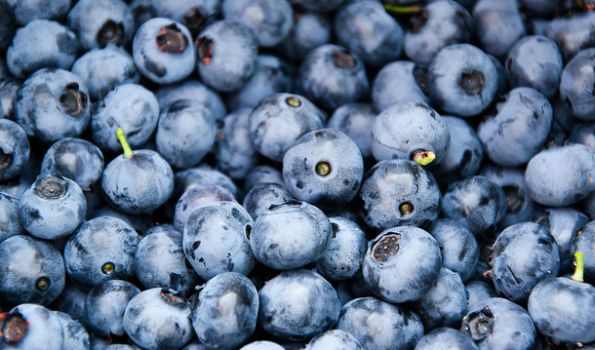
There are two main different types of blueberries we generally see in the stores. Conventional blueberries typically taste best when they are big, round and plump. Look carefully for any crushed berries inside the container, or any berries that appear to be wrinkly as this can be a sign of age. There is a variety of sweet blueberries that are tiny and sweet, but they are generally much smaller in appearance and only have a short season they are available in stores or farmers markets.
Berries tend to go bad very quickly. You can extend the life of your ripe berries by washing them in a bath of one part vinegar and three parts water. To see the full directions, check out the instructions at Momables.
Bargainmoosers, do you have any tips for picking ripe fruit?
(Image Credit: Didriks, Miroslav Vajdic, Alice Henneman, @rsseattle)
